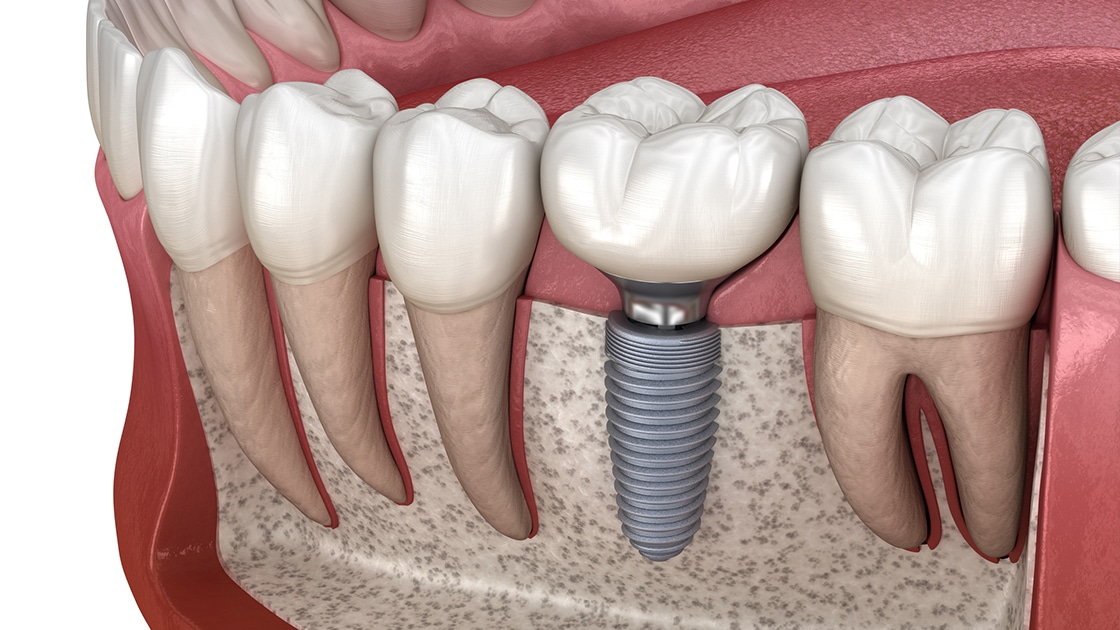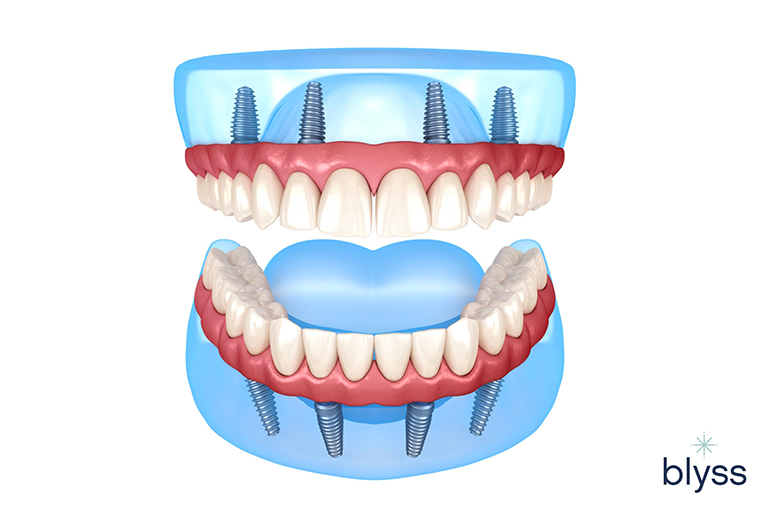The Of Dental Sense
The Of Dental Sense
Blog Article
The Facts About Dental Sense Uncovered
Table of ContentsMore About Dental SenseDental Sense Things To Know Before You Get ThisDental Sense Things To Know Before You Get ThisRumored Buzz on Dental Sense
are clinical tools surgically implanted into the jaw to recover an individual's capacity to chew or their appearance. They provide support for synthetic (phony) teeth, such as crowns, bridges, or dentures. When a tooth is lost due to injury or condition, a person can experience problems such as rapid bone loss, malfunctioning speech, or adjustments to eating patterns that result in pain.Dental dental implant systems include an oral implant body and oral implant joint and might additionally consist of a joint addiction screw. Dental implant vs bridge. The oral implant body is operatively placed in the jawbone in place of the tooth's origin. The oral implant abutment is typically affixed to the dental implant body by the abutment addiction screw and extends through gum tissues right into the mouth to sustain the attached synthetic teeth
(https://www.gaiaonline.com/profiles/dentalsense1/46992240/)Framework of The Oral Implant System selecting oral implants, talk with your dental company about the potential advantages and threats, and whether you are a prospect for the procedure. Things to take into consideration: Your general health is an important consider establishing whether you are an excellent prospect for dental implants, the length of time it will certainly require to heal, and the length of time the implant may remain in location.
Smoking cigarettes may affect the recovery procedure and decrease the long-term success of the implant. The recovery procedure for the implant body may take several months or longer, throughout which time you usually have a temporary joint instead of the tooth. the oral implant treatment: Carefully adhere to the oral health instructions given to you by your oral supplier.
Dental Sense for Beginners
Implant failure can result in the need for another operation to take care of or change the dental implant system. Brings back the capacity to chew Brings back cosmetic appearance Helps maintain the jawbone from diminishing as a result of bone loss Protects the health of the surrounding bone and gum tissues Helps keep nearby (neighboring) teeth steady Improves quality of life Damages to surrounding natural teeth throughout implant placement Injury to the surrounding cells during surgical procedure, such as sinus perforation Injury throughout surgical procedure (for instance, crack of bordering jawbone) Poor feature, such as feeling like the teeth do not attack together normally An experience that the tooth hangs or turning in position arising from an abutment screw loosening up Implant body failure (looseness of the dental implant body) because of systemic infection, which might be much more likely in individuals with unchecked diabetes due to local infection in bone and periodontals supporting the implant body as a result of postponed healing, which might be a lot more most likely in patients who smoke Difficulty cleaning up the gum tissues around the dental implant, leading to bad oral health Neglected gum illness Post-surgical tingling as a result of nerve impingement or damages Always notify wellness treatment suppliers and imaging service technicians that you have oral implants prior to any type of magnetic resonance imaging (MRI) or x-ray procedures.
FDA is not familiar with any negative events reported for MRI or x-ray procedures with dental implants. Oral implants systems are generally constructed from materials that adhere to worldwide consensus criteria of the International Organization for Standardization (ISO) or ASTM International. These standards have information of what makes a risk-free material.

A dental implant is a framework that replaces a missing out on tooth. With screw-like tools, the cosmetic surgeon inserts a dental implant right into the jawbone, and it works as an anchor for a man-made tooth, called a crown. A tool called an abutment links the man-made tooth to the dental implant. The crown is customized to fit the individual's mouth and match the color of their teeth.
Dental Sense Can Be Fun For Everyone
Some people are not qualified for oral implant surgical procedure. It is for oral doctors to run on individuals with: severe illnessuncontrollable metabolic diseasebone or soft cells disease or infectionIf these problems are solved, a person can have the surgical procedure. In, oral surgeons avoid from operating individuals with: If people with any one of the above undergo dental implant surgery, there is a greater risk of the implant stopping working.

Oral dental implant surgery is a tailored process. Offer you time to heal. Connect the post and final crown, bridge or denture.
Next, your doctor will thoroughly position the oral implant into your jaw. Your specialist will certainly reposition your gum tissues and close the incision with stitches. If your dental implant is near the front of your mouth, your dental practitioner will make a short-term tooth for you to wear until you heal. That method, you won't have a gap in your smile while you recuperate.
Dental Sense - An Overview
Throughout the recovery phase, your jawbone should fuse to the oral implant. This process can take anywhere from three to 9 months.
As soon as your dental implant heals, your dental expert can attach the joint (small connector article) and your last repair (crown, bridge or denture). This normally takes about one hour to complete and might call for a 2nd small official statement surgery. You shouldn't feel any kind of discomfort throughout your oral implant procedure due to the fact that your provider will make use of medication to numb your periodontals.
Report this page